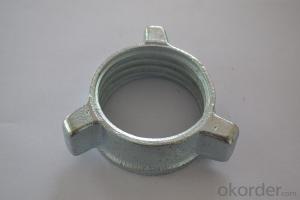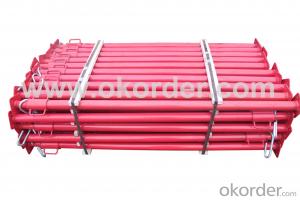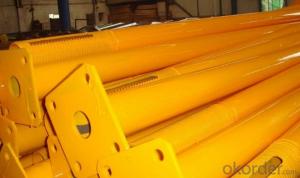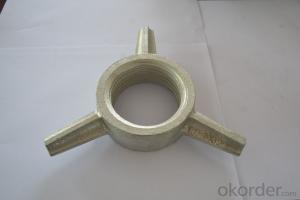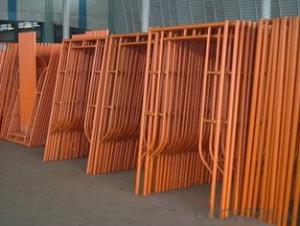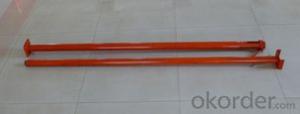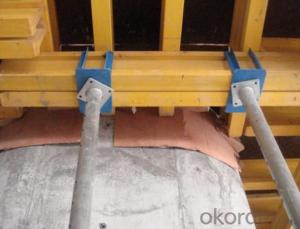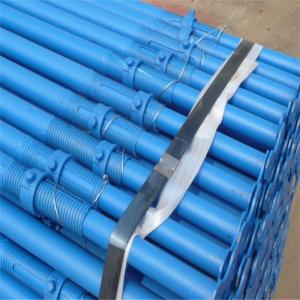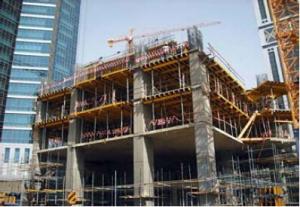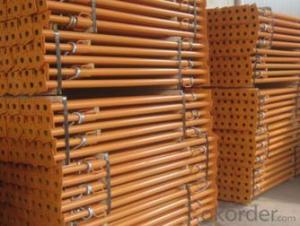OEM Two wing Butterfly Wing Nuts 11
- Loading Port:
- China Main Port
- Payment Terms:
- TT OR LC
- Min Order Qty:
- -
- Supply Capability:
- -
OKorder Service Pledge
OKorder Financial Service
You Might Also Like
Quick Details
| Model Number: | |||||
| Standard: | Type: | Certification: | |||
| Material: | Surface: |
Packaging & Delivery
| Packaging Detail: | Plastic bag, pallet packing, carton box, by customer's requirement |
| Delivery Detail: | within 30days after payment |
Specifications
Two wing Butterfly Wing Nuts
1>Excellent dimension accuracy
2>Finished: per your requirements
3>factory directly supply
Two wing Butterfly Wing Nuts
We supply kinds of metal parts totally according to clients' drawings and samples and special requirement.
1. Material: Ductile iron .
2. Sizes: Inner hole Dia 15/17mm.
We have different sizes ,types of wing nut to meet your needs, save your cost .
3. Weight: 0.35kg,thread pitch: 10.0mm.(or 6.35mm)
4. Surface: White Zinic , Yellow Zinic or painted, self color
5 Thread:casted or machine tap.
1. 12000M2 standard modern workshop guarantee production capability to satisfy the customers needs
2. Our Independent quality control department,Which make sure the quality of all products
3. Our efficient and experienced sales team ,provide friendly and thoughtful service for clients from all over the world
- Q:Which is not included in the price
- According to the actual width of foundation pit should do piping pre fight before installation, and do a good job in the middle section, the fixed end, end of the link bolt is related examination completely, have assembled support both ends of center line eccentricity control at 2 cm, after inspected by supporting part number.
- Q:Can steel props be used in road construction?
- Yes, steel props can be used in road construction. Steel props, also known as adjustable steel props or acrow props, are commonly used in construction to support and temporarily hold structures or formwork during construction projects, including road construction. In road construction, steel props are often used to support and stabilize temporary structures such as scaffolding, formwork, or concrete barriers. They are also used to provide additional support to excavated areas or trenches during the construction of road foundations or underground utilities. Steel props are preferred in road construction due to their strength, durability, and adjustability. They can be easily adjusted to the required height, allowing for flexibility in different construction scenarios. Additionally, steel props are lightweight and portable, making them efficient and cost-effective in road construction projects. Moreover, steel props offer a high load-bearing capacity, ensuring the stability and safety of the construction site. They can withstand heavy loads and provide reliable support to the structures or formwork being used in road construction. Overall, steel props are a valuable tool in road construction, providing temporary support and stability to various structures or formwork used in the construction process.
- Q:How do you prevent accidents or injuries while using steel props?
- To prevent accidents or injuries while using steel props, it is important to follow the necessary safety precautions. This includes ensuring that the steel props are properly inspected and maintained before use. Additionally, it is crucial to use the correct size and type of props for the specific job requirements. Proper training and supervision of workers using steel props is also essential. Workers should be educated on proper handling techniques, including how to securely position and secure the props to prevent them from collapsing or causing accidents. Regular monitoring of the props during use is necessary to detect any signs of damage or instability. Lastly, it is vital to create a safe working environment by ensuring that the area is clear of obstructions and that workers are wearing appropriate personal protective equipment.
- Q:How do steel props compare to hydraulic jacks?
- Steel props and hydraulic jacks are both commonly used for supporting heavy loads in construction projects. However, there are several key differences between the two that make them suitable for different applications. Steel props, also known as steel shoring or acrow props, are adjustable metal poles with a threaded end that can be extended or retracted to the desired height. They are especially useful for providing temporary support to structures during renovations, repairs, or formwork operations. Steel props are known for their robustness, stability, and load-bearing capacity. They are typically made from high-quality steel, making them durable and able to withstand heavy loads. Steel props are easy to install and adjust, allowing for quick and efficient work. On the other hand, hydraulic jacks utilize fluid pressure to lift and support heavy loads. They are commonly used in automotive repair shops, industrial settings, and in situations where precise and controlled lifting is required. Hydraulic jacks consist of a hydraulic cylinder, a pump, and a release valve. By pumping the handle of the jack, hydraulic pressure is built up, causing the cylinder to extend and lift the load. The main advantage of hydraulic jacks is their ability to provide accurate and controlled lifting, making them suitable for delicate operations and where height adjustments are necessary. In terms of comparison, steel props are generally more cost-effective and versatile than hydraulic jacks. Steel props can be easily adjusted to various heights, making them suitable for a wide range of applications. They are also highly durable and can withstand heavy loads without the risk of failure. In contrast, hydraulic jacks are more specialized and typically more expensive. While they offer precise control and are ideal for lifting heavy loads in specific situations, they may not be as versatile or cost-effective as steel props. Overall, the choice between steel props and hydraulic jacks depends on the specific requirements of the project. Steel props are a reliable and affordable option for temporary support and general construction needs, while hydraulic jacks are better suited for precise lifting and controlled operations.
- Q:How do steel props contribute to the prevention of concrete slab cracking?
- Steel props, also known as steel supports or scaffolding, play a crucial role in preventing concrete slab cracking. Here are a few ways in which steel props contribute to this: 1. Load distribution: Steel props help distribute the weight and load of the concrete slab evenly, ensuring that the weight is adequately supported and reducing the risk of concentrated stress points. By providing additional support, steel props help prevent excessive deflection or bending of the slab, which can lead to cracking. 2. Temporary reinforcement: During the concrete pouring and curing process, steel props act as temporary reinforcement, preventing the slab from sagging or settling unevenly. This temporary support ensures that the slab maintains its intended shape and alignment, reducing the chances of cracking due to structural instability. 3. Minimizing formwork movement: Steel props are often used to support the formwork or molds during the pouring of concrete. By securely holding the formwork in place, they minimize any movement or displacement during the pouring and curing stages. This stability helps prevent cracks that may occur due to formwork shifting or settling. 4. Controlling concrete shrinkage: Concrete undergoes shrinkage as it cures, which can lead to cracking if not adequately controlled. Steel props can be used to apply pressure or tension on the slab, minimizing the shrinkage and reducing the likelihood of cracking. By providing additional support and reducing the tensile stresses on the slab, steel props help mitigate the effects of shrinkage. 5. Flexibility in adjusting loads: Steel props are adjustable, allowing for precise control over the load-bearing capacity. This flexibility is essential in preventing cracking as it enables engineers to optimize the support provided by the props based on the specific requirements of the concrete slab. By adjusting the props, the load can be distributed more evenly, reducing the risk of overloading and subsequent cracking. In summary, steel props contribute to the prevention of concrete slab cracking by distributing the load evenly, providing temporary reinforcement, minimizing formwork movement, controlling concrete shrinkage, and offering flexibility in load adjustments. Their role in supporting the structural integrity of the slab significantly reduces the chances of cracking, ensuring a more durable and stable concrete structure.
- Q:Can steel props be used for supporting temporary sound barriers?
- Yes, steel props can be used for supporting temporary sound barriers. Steel props are commonly used in construction projects to provide temporary support for structures, including walls and barriers. These props are adjustable in height and can be easily installed and removed, making them a convenient option for supporting temporary sound barriers. The steel props can be fixed at appropriate intervals along the sound barrier to ensure stability and prevent any movement or collapse. Additionally, the strength and durability of steel props make them suitable for withstanding the weight and pressure exerted by the sound barrier. Overall, steel props are an effective and reliable choice for supporting temporary sound barriers.
- Q:Can steel props be used in both indoor and outdoor environments?
- Yes, steel props can be used in both indoor and outdoor environments. Steel is a durable and strong material that can withstand various weather conditions, making it suitable for outdoor use. Additionally, steel props can also be used indoors for various construction and support purposes.
- Q:Can steel props be used in construction of hospitals?
- Yes, steel props can be used in the construction of hospitals. Steel props, also known as steel acrow props or steel support props, are adjustable steel columns that are commonly used in construction to provide temporary support to structures, such as walls, floors, and ceilings. These steel props are typically made of high-grade steel and are designed to withstand heavy loads, making them suitable for use in various construction projects, including hospitals. In the construction of hospitals, steel props can be used to support temporary structures, such as formwork for concrete walls or slabs, scaffolding for access to different levels, or to provide additional support during the installation of heavy equipment or machinery. They can also be used to reinforce existing structures during renovations or repairs. Steel props offer several advantages in construction, including their strength, durability, and adjustability. Their adjustable feature allows for easy customization to fit the specific height requirements of a hospital construction project. Additionally, steel props are known for their stability and load-bearing capacity, providing a safe and reliable support system during the construction process. It is important to note that while steel props can be used in the construction of hospitals, they are typically used as temporary support systems rather than permanent structural elements. Steel props are designed to be easily installed, adjusted, and removed, making them ideal for temporary applications in construction. Therefore, it is essential to consult with structural engineers and follow building codes and regulations to ensure the safe and proper use of steel props in hospital construction projects.
- Q:Can steel props be used to support heavy machinery?
- Indeed, heavy machinery can be supported using steel props. Possessing strength and durability, steel props prove to be ideal for offering support and stability to heavy equipment and machinery. They find frequent application in construction sites, industrial environments, and various other scenarios where the burden of substantial loads necessitates support. The adjustable heights of steel props enable customization to suit the specific needs of the machinery being supported. Moreover, their installation and removal are effortless, ensuring flexibility and convenience. Ultimately, steel props emerge as a dependable solution to ensure the secure operation of heavy machinery.
- Q:Are steel props easy to transport?
- Steel props can be relatively easy to transport depending on their size and weight. While they are typically heavier and bulkier compared to other types of props, such as aluminum or wooden props, steel props are designed to be dismantled and assembled easily, which makes them more manageable for transportation. They can be disassembled into smaller components, reducing their overall size and making them easier to fit into vehicles for transportation. Additionally, some steel props come with carrying handles or straps, which further facilitate their transport. However, it is important to consider the weight and size of steel props when planning transportation logistics, as they may require additional equipment or assistance to move them safely and efficiently.
1. Manufacturer Overview |
|
|---|---|
| Location | |
| Year Established | |
| Annual Output Value | |
| Main Markets | |
| Company Certifications | |
2. Manufacturer Certificates |
|
|---|---|
| a) Certification Name | |
| Range | |
| Reference | |
| Validity Period | |
3. Manufacturer Capability |
|
|---|---|
| a)Trade Capacity | |
| Nearest Port | |
| Export Percentage | |
| No.of Employees in Trade Department | |
| Language Spoken: | |
| b)Factory Information | |
| Factory Size: | |
| No. of Production Lines | |
| Contract Manufacturing | |
| Product Price Range | |
Send your message to us
OEM Two wing Butterfly Wing Nuts 11
- Loading Port:
- China Main Port
- Payment Terms:
- TT OR LC
- Min Order Qty:
- -
- Supply Capability:
- -
OKorder Service Pledge
OKorder Financial Service
Similar products
New products
Hot products
Hot Searches
Related keywords
